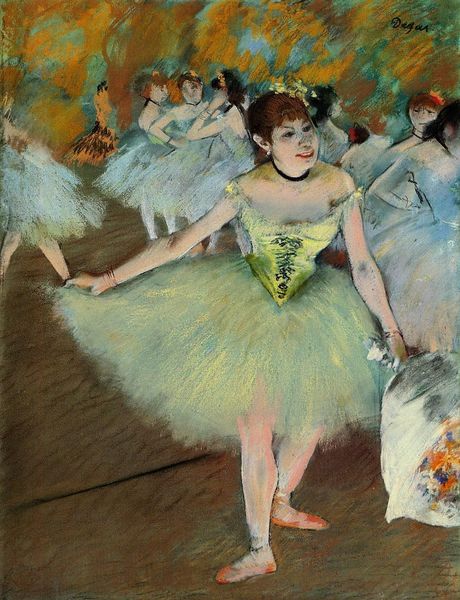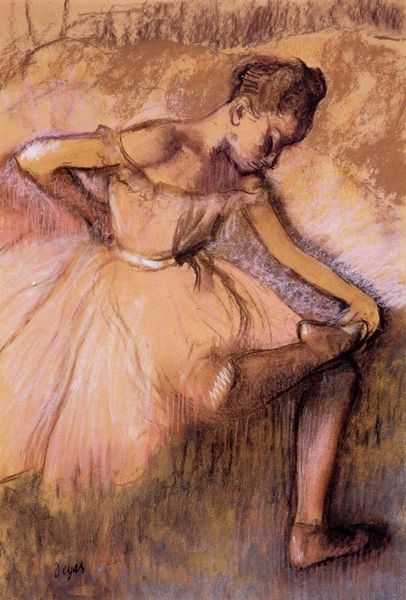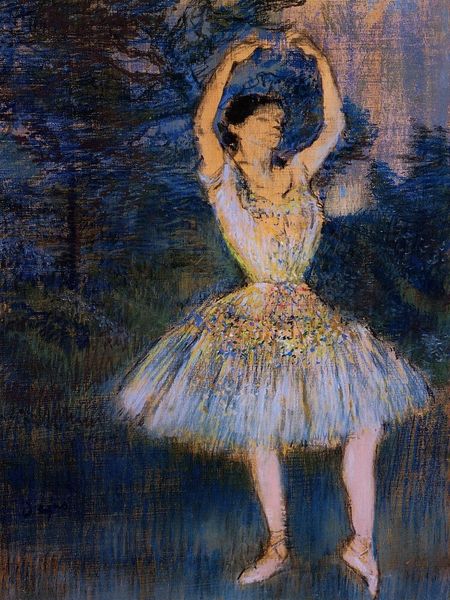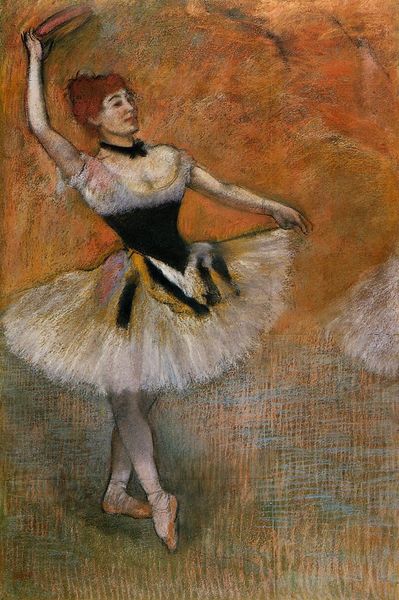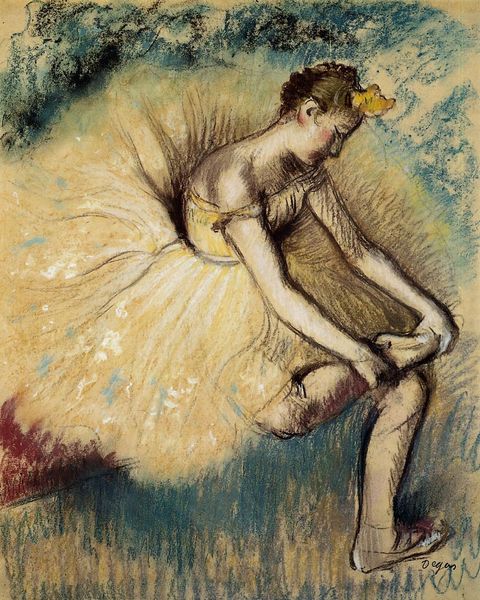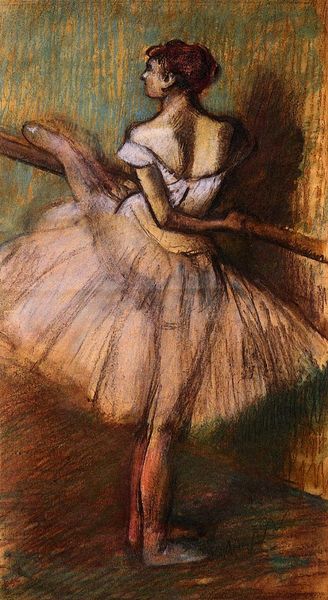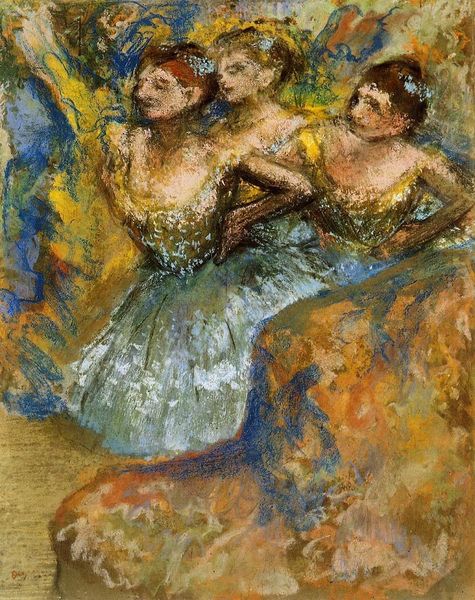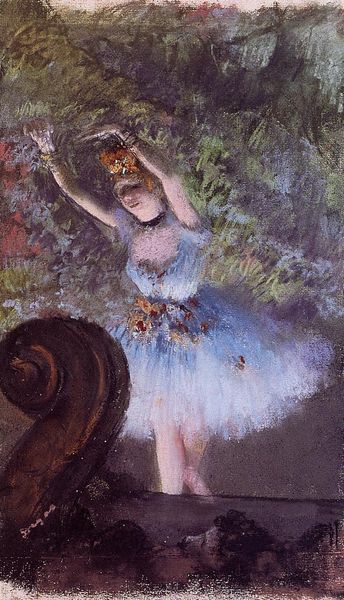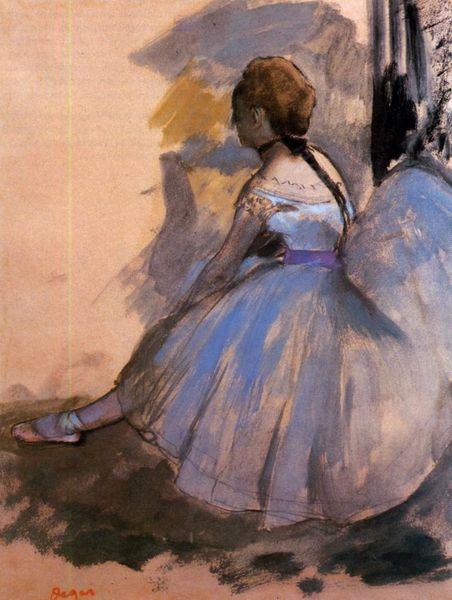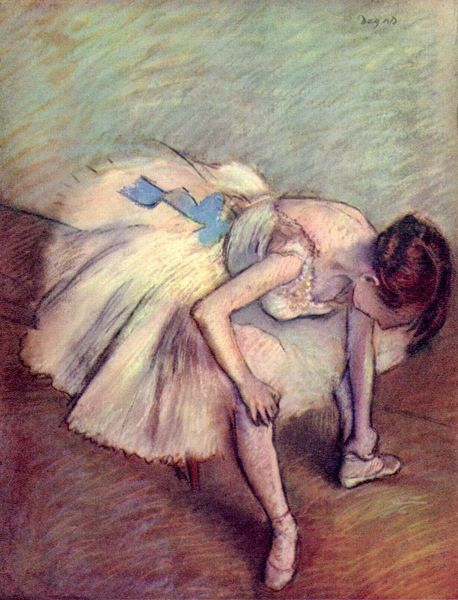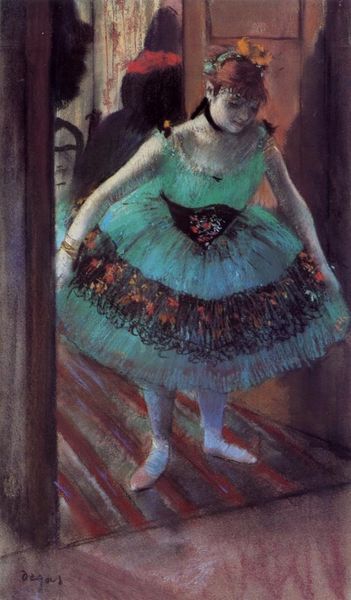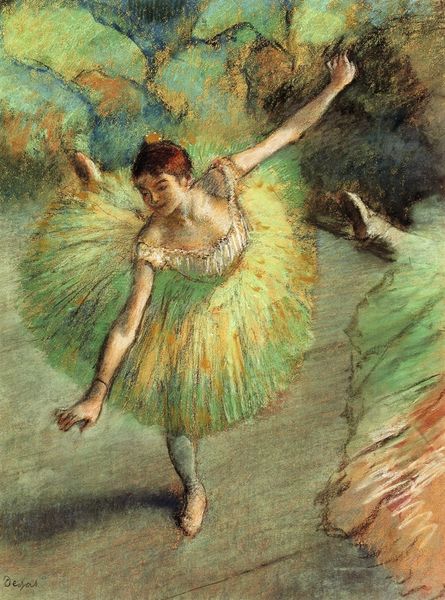
painting, pastel
#
portrait
#
impressionist
#
painting
#
impressionism
#
figuration
#
possibly oil pastel
#
oil painting
#
line
#
pastel
Copyright: Public domain
Editor: So here we have Edgar Degas' "Seated Dancer," created around 1880, and residing at the Hermitage Museum. The medium is pastel, I believe. What strikes me immediately is the contrast. She appears relaxed but also, in a way, trapped by the gaze of the viewer. How do you interpret this work? Curator: Degas masterfully captured the emotional weight carried by these dancers. Her averted gaze, for example – it is a symbol in itself, perhaps reflecting societal pressures or the demanding nature of her profession. Consider also how the pastel medium itself contributes. Do you see the marks? Editor: Yes, I see the almost scratchy, vibrant marks that contribute to a feeling of uneasiness. The image refuses to "resolve" itself into clarity, contributing to an air of indeterminacy and unease. Curator: Precisely! The haziness is intentional. Degas is revealing not just the ballerina but a commentary on spectacle. Are we complicit as viewers, in creating the symbolic burden that this dancer appears to bear? Editor: I see your point. Her pose is both elegant and weary, like she's embodying this push-pull of expectations and exhaustion. And the fact that her bright red lips is one of the only colorful elements of the painting further isolates her face as a sight, a spectacle. Curator: A keen observation. The red lips, consciously applied make-up – those also operate symbolically. She isn't simply a person; she’s crafting herself into an image. The visual language speaks of the dancer's simultaneous agency and lack of control. She is the architect of her look and yet remains subject to an exploitative, external perspective. Editor: This makes me think about how Degas is not simply presenting an image, but also encoding so much social commentary within a deceptively beautiful image. The work appears impressionistic, but is imbued with cultural commentary. Curator: Exactly. Every element–from her posture to the very pigments chosen–speaks to the larger cultural narratives swirling around performance and perception. It's why, generations later, the symbolism in Degas' work still resonates so powerfully.
Comments
No comments
Be the first to comment and join the conversation on the ultimate creative platform.
